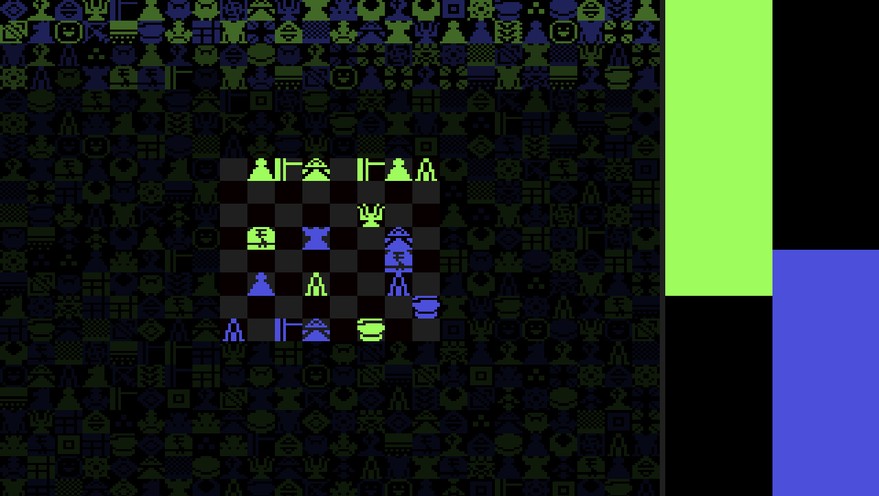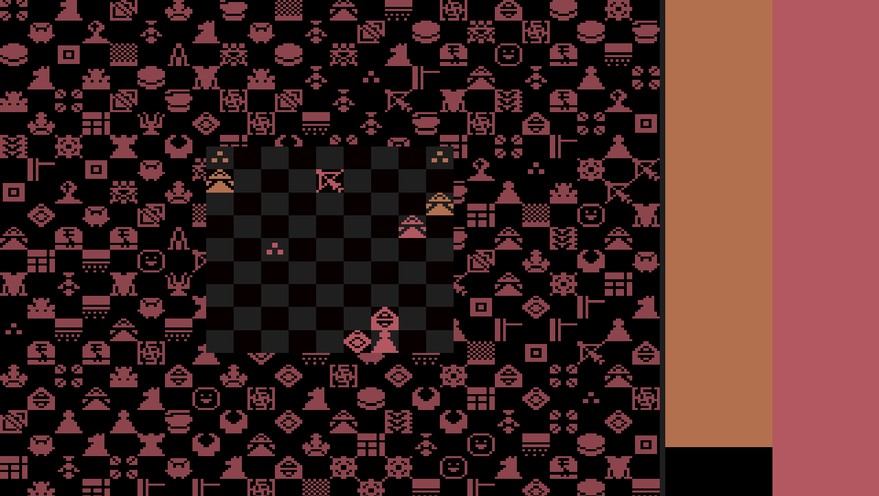Chess is quite a game. The game. Chess is so old and so esteemed it’s often used as a point of legitimacy for other things. If you have a lengthy discussion about Street Fighter, critical or not, you’ve started a countdown to an inevitable “like chess” comparison. It’s easy to pick up and not only hard to master, but becoming the best at it gets you called a prodigy. It’s dramatic, it’s intensive, and largely seen as balanced. “Why fix what isn’t broken?” says two percent of the world’s coffee mugs.
In any case, XYQ4 is an attempt to break chess just to see what happens. The result is a glitched-out zombie version of a classic. But first—what’s with that name?
“Originally it was just a placeholder name,” says The Yawhg creator Damian Sommer. “But then it was more like a deliberate choice of characters that seemed random but aren’t. X and Y work together, Q is another odd letter, and 4 is just to throw people off. It doesn’t look random at all. I kind of grew to like it, because it works while being random, like how the game randomizes itself. It’s kind of randomized, but a lot of the elements are designed. The name represents that. It seems esoteric in a way, and it makes me happy.”

During a game jam, where the theme was “after you,” Sommer was chatting with Alex Droqen on the matter of first-turn advantages always being a detraction in boardgames. And this is even true for chess, in all its glory, says Sommer.
“With perfect play, first player always wins or the game ends in a draw,” says Sommer. “Chess is either a draw or white wins. There’s no situation where black wins. If chess was solved, computers haven’t entirely solved it, but there’s no situation that wouldn’t end in a tie, where either player would beat the outcome.”
So, according to theory, if two godlike omnipotent probably hairless illuminati space people–perfect players–went head to head, the second player would never be capable of taking the crown, no matter how flawless their performance. So despite all of chess’ finesse, this folly takes it down to the same peg as Connect Four. “Essentially, my solution is, what if you don’t know what the game is when you start playing?” Sommer says.
XYQ4’s weird vibes aren’t limited to its glitched board face. Each game begins with both players getting their pieces, none of them looking like the usual crew, even in a world with some heinously goofy chess sets. Their appearance isn’t the only curveball either, because even if you know what each piece should do from their position on the board, their functions are randomly lifted from a selection of various and weird move sets, which makes every play-session completely different.
This, in a weird way, takes the Connect Four disadvantage and turns it into the mini-putt advantage. There is a benefit to watching the first player make a move to understand how this strange new piece functions, where the neon little ball ends off the first stroke. For the second player, then, they must decide to take advantage of this new information, orrrrr venture into unfamiliar territory themselves, discover how one of their other pieces functions.

There are around 50 move sets. Some pieces move like a king, but can shuffle two spaces instead of one. Some pieces can warp anywhere except for where other pieces are standing. One piece is like a knight that can move infinitely in any direction. Sommer thinks he may have ripped that one from Chess 2, but he’s a big fan, and wouldn’t be the only one inspired by the wide world of chess variants.
Obviously, XYQ4 doesn’t “fix” chess to make its imperfection perfect; it exploits its imperfection to make an imperfectly imperfect experience. XYQ4 is surrendering your expertise, flying blind in a familiar territory.
Header image via Thomas Eakins
